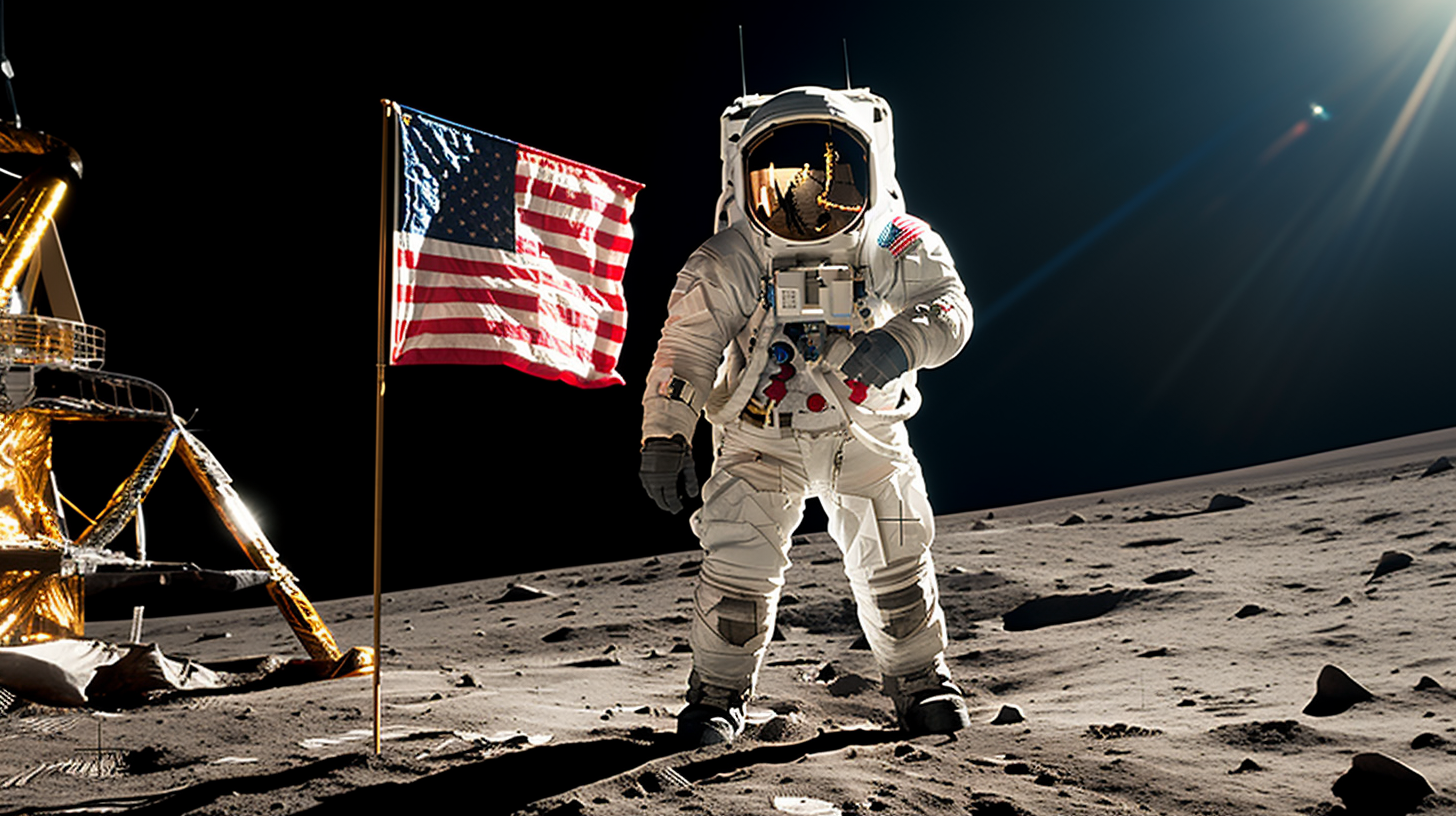Back in the 1950s, a time dominated by captivating science fiction narratives, Wernher von Braun envisioned a way to transform these fantastical stories into reality. A scientist, engineer, and dreamer, von Braun’s unique blend of talents would leave an indelible mark on the history of space exploration. In 1952, his vision gained traction when Collier’s magazine published an illustrated series depicting life beyond our planet’s atmosphere.
The launch of Sputnik by the Soviet Union in 1957 sparked a newfound interest in space exploration amongst Americans. Leveraging his original V2 rocket designs, von Braun played a pivotal role in launching the first American satellite into space and eventually sending a human into orbit.
However, the crowning achievement was yet to come. On July 20, 1969, a 57-year-old von Braun observed from mission control as an astronaut took humanity’s first steps on the lunar surface. What was once deemed impossible had become a reality.
The rapid progression from early space endeavors to the Moon landing within a span of six decades stands as a monumental accomplishment. The technological advancements made during this period were nothing short of extraordinary. But how did von Braun and his team possess the intricate knowledge needed for such precision?

The calculations involved in reaching the Moon demanded extreme precision. The slightest deviations in trajectory or minor speed adjustments could result in missing or failing to capture the lunar orbit. The real-time orbital adjustments were a remarkable feat. But where did this profound understanding stem from?
Some speculate that extraterrestrial technology might hold the key. Was it possible that von Braun and his cohorts had access to advanced knowledge that propelled them forward in science and engineering realms that would have otherwise been unattainable? It’s a notion that raises thought-provoking queries.
The meticulous data essential for the Moon landing, from the precise lunar gravitational pull to the optimal Earth orbit escape velocity and the impact of cosmic radiation on the spacecraft, seems almost too exact for the technological capabilities of the era. Could extraterrestrial insights have played a role in this intricate process?
Von Braun’s ambitions extended beyond lunar landings; he envisioned establishing space colonies. Could this lofty objective have been sparked by influences beyond our planet? Was von Braun guided not only by his intellect but also by a higher extraterrestrial force? Perhaps the Moon landing, a pinnacle of human achievement, was facilitated with a touch of extraterrestrial assistance?
While these ponderings may linger in the realm of speculation, the concept of a cosmic link between human ingenuity and potential extraterrestrial intervention adds an intriguing dimension to the Moon landing narrative. As we delve further into the mysteries of the cosmos, perhaps one day, we’ll uncover the truth behind whether our giant leap for mankind was nudged along by extraterrestrial hands.
